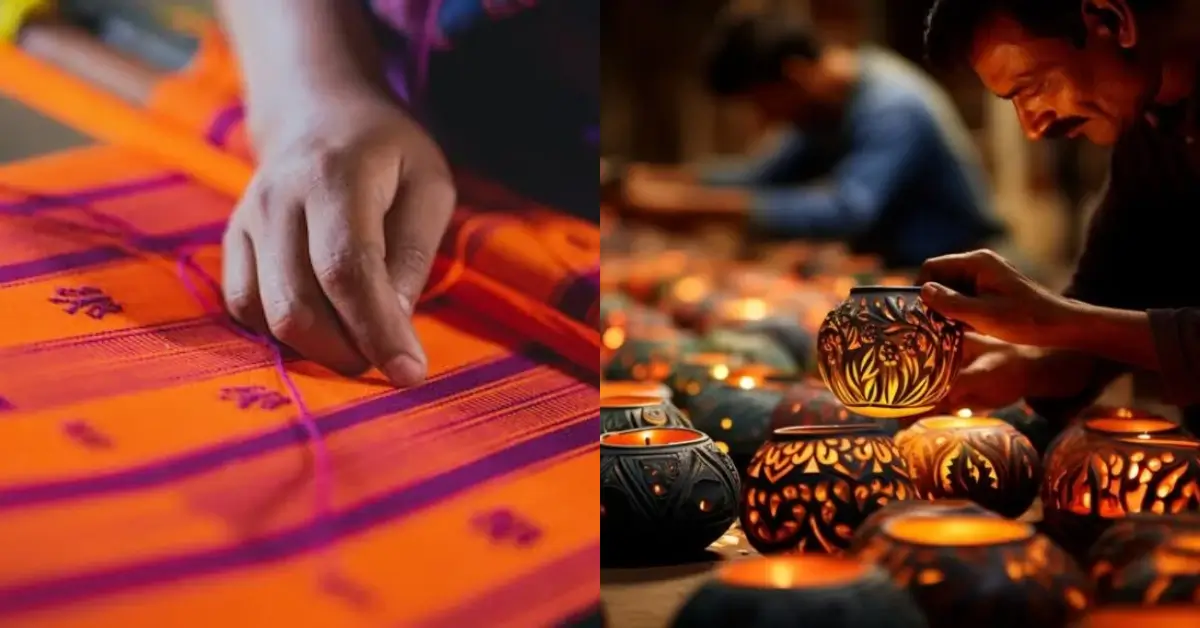Tissariss represents the perfect fusion of artistry, culture, and sustainability. This traditional weaving technique showcases the beauty of handcrafted textiles while preserving rich cultural legacies.
With its intricate designs and eco-conscious practices, Tissariss stands as a timeless tribute to craftsmanship that excites art lovers and collectors worldwide.
More than just a weaving method, Tissariss is a cultural phenomenon that continues to thrive in the modern age. By combining heritage weaving techniques with contemporary innovations, it has remained relevant and inspiring, attracting artisans, designers, and enthusiasts alike.
What is Tissariss?
Tissariss is an intricate textile art form known for its vibrant patterns, handcrafted weaving, and use of natural materials like cotton, silk, and wool. These textiles are celebrated for their durability and visual appeal, often enhanced by plant-based dyes and symbolic motifs.
Rooted in heritage weaving techniques, Tissariss reflects a blend of traditional craftsmanship and cultural identity. Whether through hand-knotting, braiding, or plaiting, its artisans create works that are as functional as they are artistic, adding to its enduring legacy.
Historical Background and Origins of Tissariss
The origins of Tissariss are deeply connected to ancient weaving traditions that span centuries. Passed down through generations, this art form reflects the stories, values, and customs of its creators. Cultural folklore and symbolism are intricately woven into its patterns, preserving its legacy as a cultural treasure.
From its humble beginnings in small artisan communities, Tissariss has evolved into a globally admired art form. Modern designers and collectors now celebrate its historical significance, ensuring its place as a cornerstone of textile heritage.
Read Also: Meet the Team TheWeeklySpoon.com
Tissariss Weaving Techniques
The craftsmanship behind Tissariss is unparalleled. Techniques like hand-knotting, braiding, and plaiting add layers of texture and depth, making each piece unique. The use of hand looms ensures precision and a human touch in every design.
Artisans employ a meticulous approach, often spending weeks to create a single masterpiece. This dedication to detail and tradition sets Tissariss apart, blending ancient methods with the artistry of the present.
Materials and Dyes in Tissariss Creations
Tissariss relies on natural materials like cotton, silk, and wool, ensuring both sustainability and quality. These textiles are enhanced by plant-based dyes, offering vibrant, eco-friendly colors that stand the test of time.
The use of natural dyes, derived from plants, roots, and minerals, aligns with modern sustainability practices. This commitment to eco-conscious production further elevates Tissariss as an art form that values the environment as much as it does tradition.
The Cultural Significance of Tissariss Art
Tissariss is more than just an art form; it is a cultural identity. Each pattern and design reflects the history, beliefs, and stories of its creators. From celebratory motifs to spiritual symbols, Tissariss textiles carry profound meanings.
By preserving cultural traditions through weaving, Tissariss fosters a sense of community and heritage. It serves as a bridge between past and present, connecting generations through the artistry of textiles.
Symbolism in Tissariss Designs
The designs in Tissariss textiles are rich in symbolism. Nature-inspired motifs, geometric patterns, and cultural references are common, each telling a unique story. These elements add depth to the art, making it both visually stunning and intellectually engaging.
Colors play a vital role in the symbolism of Tissariss. Earthy tones often represent harmony with nature, while bold hues like red signify joy and celebration. This thoughtful use of color and design elevates Tissariss beyond mere aesthetics
Featured Tissariss Artists and Their Works
Prominent artisans like Anaya Ghosh and Ramesh Kumar have brought global recognition to Tissariss. Their works highlight the versatility and timelessness of this art form, showcasing its ability to adapt to modern trends while retaining traditional values.
These artisans are celebrated not only for their skill but also for their dedication to preserving Tissariss. By participating in exhibitions and collaborations, they ensure that this heritage art form continues to inspire and evolve.
Contemporary Innovations in Tissariss Art
Modern designers are redefining Tissariss by integrating digital tools and contemporary aesthetics. This fusion of tradition and modernity allows the art form to reach new audiences while staying true to its roots.
Collaborations between artisans and designers have also introduced bold innovations, such as combining traditional patterns with modern fabrics. These efforts ensure that Tissariss remains relevant in a fast-changing world.
Sustainable Practices in Tissariss Crafts
Sustainability is a cornerstone of Tissariss. The use of eco-friendly materials and dyes minimizes environmental impact, aligning with global efforts to promote sustainable art practices.
Artisans prioritize responsible sourcing and waste reduction, making Tissariss a model for sustainable textile production. This commitment not only preserves the environment but also upholds the integrity of this traditional art form.
Collaborations Between Tissariss Artists and Designers
Collaborations between Tissariss artisans and contemporary designers have opened new avenues for creativity. These partnerships blend the expertise of traditional craftsmanship with modern design sensibilities, resulting in unique creations that captivate global audiences.
From high-fashion runways to home décor, Tissariss has found its way into various domains, showcasing its versatility and timeless appeal. These collaborations celebrate the best of both worlds—heritage and innovation.
Tips for Collecting and Preserving Tissariss Art
To maintain the beauty and value of Tissariss textiles, proper care is essential. Store them in dry, cool places away from direct sunlight to prevent fading or damage.
Regular cleaning and gentle handling can ensure the longevity of these handcrafted pieces. Investing in Tissariss art not only supports artisans but also preserves a piece of cultural heritage.
Challenges Facing Tissariss Art in Modern Times
Despite its timeless appeal, Tissariss faces challenges such as competition from mass-produced textiles and declining artisan communities. Addressing these issues requires collective efforts to promote and support traditional weaving techniques.
Initiatives like educational programs and artisan workshops can help preserve the skills and traditions of Tissariss. Raising awareness about its cultural and environmental significance is also crucial for its survival.
The Future of Tissariss
The future of Tissariss is bright, thanks to its adaptability and timeless charm. By embracing contemporary innovations and sustainable practices, this art form is poised to thrive in the modern world.
With continued support from artisans, designers, and enthusiasts, Tissariss will remain a symbol of cultural identity and artistic excellence for generations to come.
Read Also: Tubgirñ
Final Thoughts
Tissariss is more than a textile art—it’s a celebration of culture, craftsmanship, and sustainability. Its intricate designs and rich history inspire trust and admiration, making it a timeless treasure in the world of art.
By supporting Tissariss, we honor its legacy and ensure that this beautiful tradition continues to inspire and captivate the world.
FAQs
What materials are used in Tissariss?
Tissariss primarily uses natural materials like cotton, silk, and wool.
Why is Tissariss significant?
It preserves cultural heritage while promoting sustainability and artistic excellence.
How can I care for Tissariss textiles?
Store in cool, dry places and avoid direct sunlight to maintain their vibrancy and quality.
Are Tissariss textiles eco-friendly?
Yes, they use plant-based dyes and sustainable materials, aligning with eco-conscious practices.
Where can I find Tissariss art?
Tissariss textiles are often available at exhibitions, artisan markets, and specialty stores.




